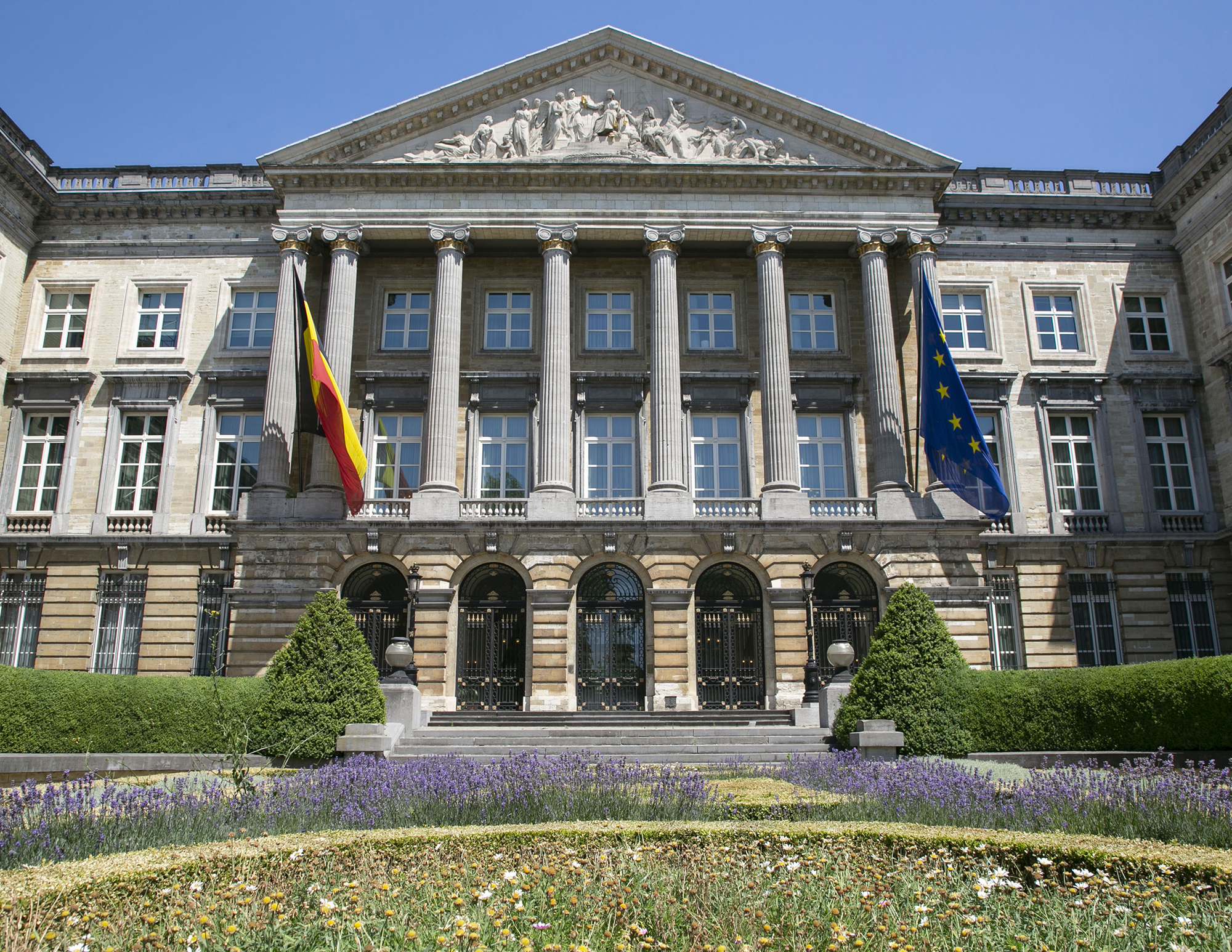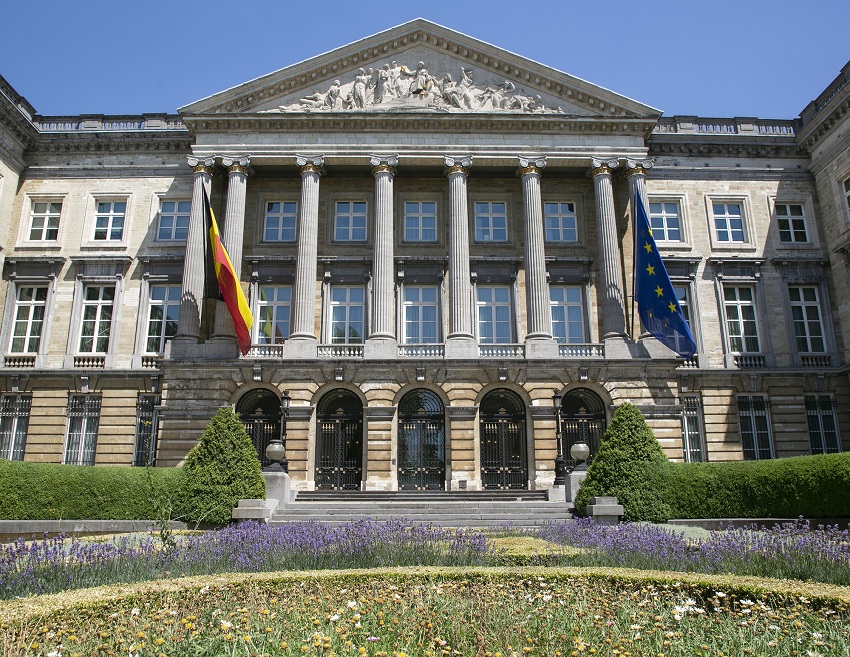
The entire surroundings of the Place Royale-Koningsplein and the Park of Brussels were rebuilt in neoclassical style following the heavy fire that destroyed the Palace of the Dukes of Brabant in 1731, according to the plans laid down by architect Barnabé Guimard. The current Palace of the Nation formed part of this project.
The first stone was laid in 1779 under the government of Empress Maria Theresa of Austria, who ruled over what was later to become Belgium. Initially, the palace was intended to house the Sovereign Council of Brabant, which was the supreme body of the Duchy of Brabant at that time, in legal and administrative matters.
Under French rule (1796-1815), the palace was used as a courthouse. For several years, part of the wing currently occupied by the Senate even housed a ‘Hôtel des Étrangers’, the equivalent of a modern day hotel of today.
Under Dutch rule (1815-1830), the Parliament of the United Kingdom of the Netherlands, known as the States-General, alternated its sessions between The Hague and this very building in Brussels. This was the first time that the palace was used to house a parliament.
The provisional government (the government of the Belgian revolutionaries) and the National Congress (the first constituent ‘parliamentary’ assembly) moved into the building in 1830. The House of Representatives and the Senate have held their sessions in this building since 1831. It has been called the ‘Palace of the Nation’ since then.
The palace was devastated by fire in 1820 and 1883. Following these fires and as a result of the various changes of use of the palace, the interior has constantly undergone renovations. The exterior of the palace, however, remains practically the same as it was when it was first built. Nevertheless, the front of the palace, which had been plastered and painted white according to neoclassical tradition, was roughcast during renovation in 1920.
© Belgian Senate

